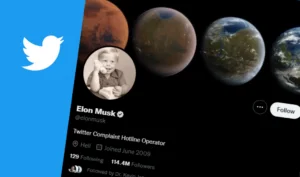
Does Everything at Work Seem Urgent? Let’s Fix That
Three years ago, the pandemic lockdown triggered a wave of relentless workplace change. Over time, we’ve all had to revamp our attitudes, expectations and behaviors

Three years ago, the pandemic lockdown triggered a wave of relentless workplace change. Over time, we’ve all had to revamp our attitudes, expectations and behaviors

In HR circles, we talk a lot about employee development. Often, we focus on its role in improving workforce engagement and retention. But strategic learning

I’m a fan of fun work environments. So of course, I’m also a fan of humor at work. Don’t get me wrong. I’m not saying

Sponsored by Reejig Countless HR tools, applications, and platforms now rely on artificial intelligence in some form. Users may not even notice that AI is

Some conversations stay with me. It could be something about the subject, the wisdom of the person I’m talking to, or the timeliness of the

Sponsored by: Empath In today’s world of work— agility matters — and how we enable our own employees to meet our company goals, is vital.

Sponsored by: RocketReach Recruiting challenges face every organization — one that is particularly daunting for smaller companies and fast-growing startups. As agility is often a

Sponsored by: Nationwide With 2022 shaping up to be much more economically challenging for many people, more so than in 2021, folks are doing what

Burnout and dissatisfaction at work are nothing new. In fact, a recent Gallup study found that more than one-half of American workers feel disengaged at

Podcast Sponsored by: Accurate Background How is background screening impacted in an increasingly remote-first world of work? No doubt, the pandemic has reshaped the workplace. And

Podcast Sponsored by: QuantumWork Advisory According to McKinsey, the pandemic has accelerated existing trends in remote work, e-commerce, and automation. As a result, up to

Podcast Sponsored by: Tydy Considering a new HR system for your company? Finding the right HR system has become a critical piece to a successful,

Working remotely is something that many of us have experienced during the pandemic. If you look at your social media feeds, you will notice multiple

Over the past 24 months, IT teams have been burdened with many unprecedented challenges. Most notably, a rising number of security concerns. But enhancing security

Remember the olden days when potential candidates applied to a handful of jobs online and waited for a response? Remember in the stone ages when

The workplace is becoming more diverse as organizations offer remote and hybrid work options and build a global workforce. With these big changes comes a

For many employees, a job isn’t simply the act of doing some work and collecting a paycheck anymore. For example, Millennial employees live in what

Frontline workers have had a difficult time over the last couple of years, to say the least. Many haven’t had the option to explore hybrid

In the modern workplace, a respectful workplace culture isn’t just a cherry on top of a job role. If the work culture isn’t healthy and

As we all know, flexibility is the lifeblood of HR, especially when it comes to adopting new technologies for attracting candidates. While many are resistant

The future of work is hybrid–with over 50 percent of people saying they’d prefer to work from home at least three days per week. But

Employee expectations are changing, with many looking to their workplaces to provide better benefits and wellness solutions. Employees want to feel valued, and in turn,

Leadership plays a significant role in work culture and organizational strategy. Yet many who are in charge seem unprepared for the responsibility. Seventy-six percent of

The “Great Resignation” has organizations everywhere in strategy mode. They’re brainstorming ways to keep employees happy and in turn, keep them on board. So what’s

Employee uncertainty is bad for business. When people don’t feel their work situations are stable, they get anxiety, depression, and have a tendency to catastrophize.